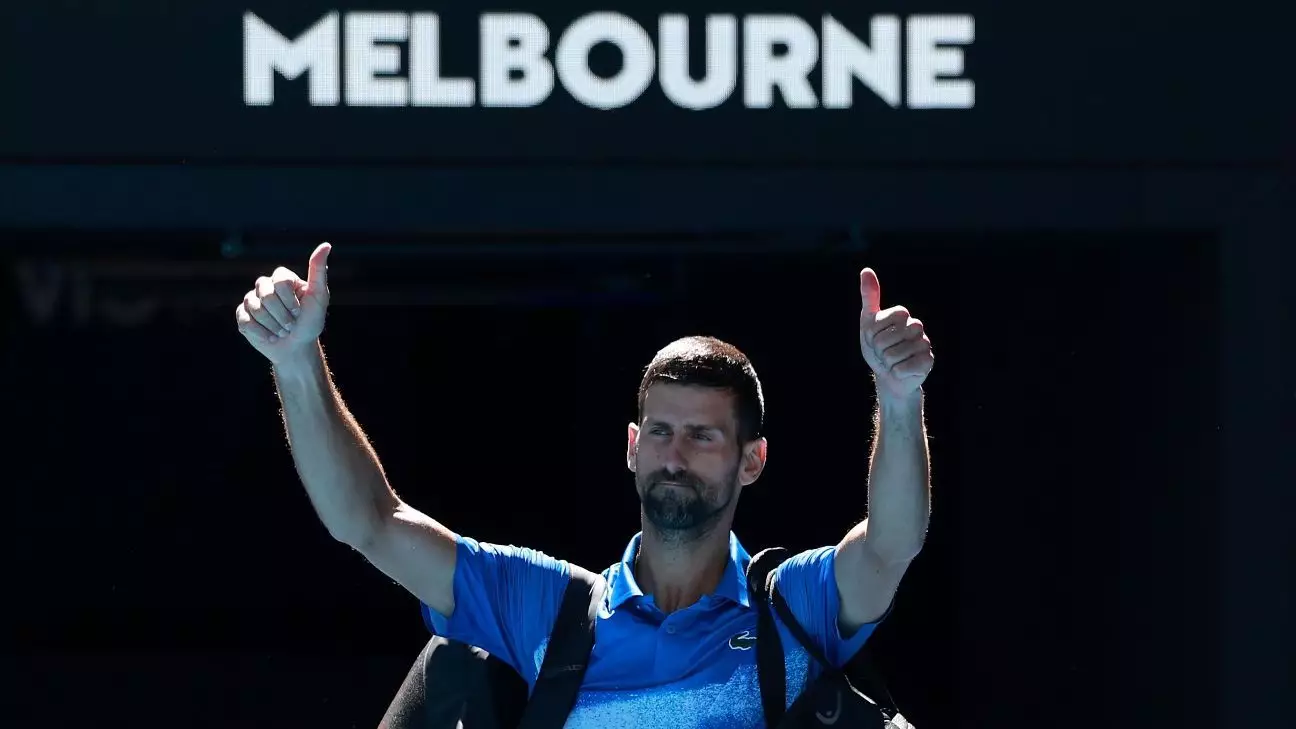In a turn of events that shocked tennis fans worldwide, Novak Djokovic was forced to withdraw from his Australian Open semifinal match against Alexander Zverev. This decision came after the 24-time Grand Slam champion experienced significant discomfort in his left hamstring, resulting in his retirement just a set into the match. This moment not only highlights the physical demands of professional tennis but also raises questions about athlete vulnerability in high-stakes situations.
Following the abrupt end to his match, Djokovic shared a scan of his hamstring on social media, a move seemingly aimed at his critics who doubted his commitment and questioned the legitimacy of his injury. The image of the MRI served as a stark reminder that behind the athlete’s facade of invincibility, there often lies pain and hardship. His cryptic caption, intended for self-affirmation amid public scrutiny, reflects the pressure athletes face, not only to perform but to justify their struggles in the face of detrimental fan reactions.
The reaction of the crowd at Rod Laver Arena amplified the emotional gravity of Djokovic’s situation. As he left the court to a chorus of boos, the incident left a lingering sense of regret among fans. While they may have come to witness a thrilling match, the questioning of Djokovic’s integrity as a sportsman was disappointing. Alexander Zverev took a stand to defend Djokovic during his on-court interview, emphasizing that such disrespect was unwarranted for someone who has spent two decades elevating tennis to new heights. Zverev’s words remind us that sportsmanship goes beyond mere entertainment; it encompasses a shared respect for the contributions and sacrifices athletes make.
In the days leading up to the semifinal, Djokovic had shown signs of struggle, previously icing and taping his leg after a challenging quarterfinal match against Carlos Alcaraz. His admission of battling a muscle tear during Friday’s match illustrates the taxing reality many elite athletes face. They often push boundaries beyond physical limits, risking long-term damage in pursuit of victory. Djokovic articulately explained how he attempted to manage the pain but ultimately recognized when his body could no longer compete.
As fans, it’s crucial to understand that professional athletes often have more than just titles and records at stake. Their physical well-being is intertwined with their careers and lives beyond the court. Djokovic’s situation serves as a potent reminder of the mental and physical health struggles many athletes face, often kept hidden under the public’s expectations and opinions.
As Djokovic seeks a recovery path, the uncertainty regarding his timeline for return adds another layer of complexity to his career narrative. Unlike typical injuries that allow for straightforward rehabilitation, muscle tears can lead to prolonged absences, effectively altering the course of an athlete’s seasons. The lack of detailed medical insights from Djokovic post-retirement only fuels speculation among fans and media alike, perpetuating a discourse fraught with impatience and undue pressure for athletes to meet unyielding expectations.
Novak Djokovic’s painful exit from the Australian Open encapsulates the harsh realities of competitive sports. It serves as a cautionary tale about how injuries are perceived, not only by fans but also by the sport’s culture at large. The coming weeks will be pivotal for Djokovic, both in terms of his recovery and his continued legacy in the game of tennis.


Leave a Reply